Looking to Visit Vietnam and trying to get your trip organized?
This Vietnam Travel Guide will do just that. I’ll help you get your bearings about how to begin planning your adventure in Vietnam, including insider tips on what to avoid and what you must experience!
Vietnam is undeniably charming but can also be a confronting experience. Let’s get you started on understanding Vietnam and what will make for the best trip.
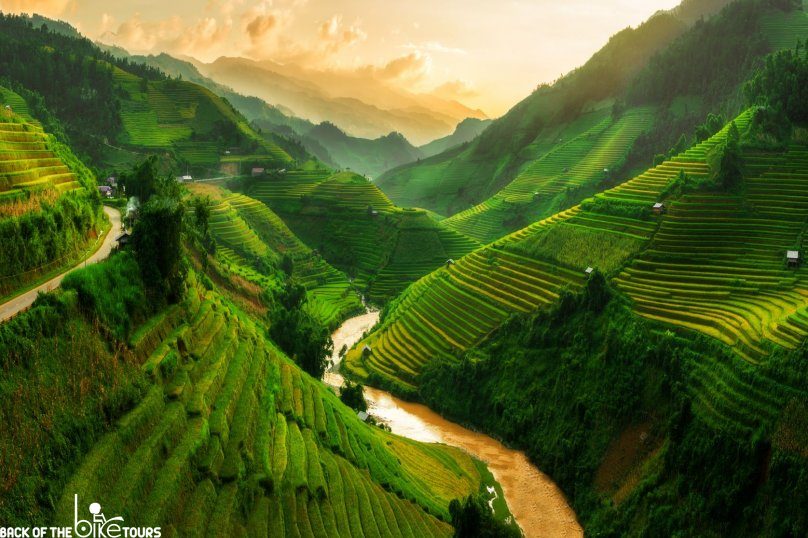
Is Vietnam worth visiting?
Yes, Vietnam is worth visiting! I’ve lived here for over a decade, operating a motorbike tour company in the South of Vietnam, so of course, my opinion might be slightly biased 🙂
But really, I do believe it is a country worth experiencing, especially when your expectations are based on reality. What do I mean by that?
Nowadays, so many people are chasing online clout that they’ll take a small snip of an experience, edit it, and then blast it all over social media like it’s going to be the best experience of your life. In my experience as a Vietnam tourism professional, that isn’t going to be the case unless you do some proper planning ahead of your trip to create a great itinerary and book the right activities.
This entire guide is about helping you create a great itinerary that will meet your expectations so you can see the best of what Vietnam offers in a comfortable and exciting way.
How to Plan Your Vietnam Trip?
Some people don’t understand exactly how long Vietnam is! It’s such a long country that becomes quite diverse as you move from the South to the North or Vice Versa. Each area of Vietnam is going to offer something a little bit different, which might make some areas of Vietnam more compelling for travelers than other areas, although most people typically do the whole Country in one go.
North Vietnam offers stunning natural scenery from areas like Sapa, Ha Long Bay, and Ninh Binh! The city of Hanoi itself offers an interesting beauty that can be described as historical and cultural, even though it has grown so large and modern.
In the central coast area of Vietnam, the major city of Da Nang opens you up to smaller cities like Hue and Hoi An. Hoi An, in my opinion, is probably the best city in Vietnam for tourism. Its interesting old town combined with a lovely beach is just a perfect combo for a 4-5 day portion of your holiday.
Southern Vietnam is known for the Mekong Delta, but it’s less objectively beautiful than areas of Northern Vietnam. Tourism products in Southern Vietnam are often less engaging than those in the North. The best part of the South for tourism is spending time in Ho Chi Minh City, which has been my home for over a decade. Here, you can shop, wine and dine, and pamper yourselves with services that will often cost a fraction of the price.
Should I Travel North to South or South to North?
I believe you should travel South to North! As mentioned earlier, the South has little to offer in terms of natural beauty—at least not in a way that is packaged for tourists to experience. The most beautiful parts of Southern Vietnam are too far south into the Mekong Delta to reach in a half-day tour. I would want your sightseeing experience to increase during your holiday and not leave on a disappointing note after experiencing the natural beauty of a place like Ha Long Bay.
With that being said, perhaps you find the metropolis life style and experience. In that case, Ho Chi Minh City and Southern Vietnam might just be the cherry on top of your entire Vietnam holiday and North to South might be a perfect experience.
Destinations
Sapa
In the top-north of Vietnam, Sapa is hidden behind mountains and hills. In Summer to Autumn, golden rice terraces embrace hills, while in Winter to Spring, sometimes snow turns Sapa villages into a fairy-tale scene. Don’t forget to visit remote villages and blend yourself into the daily life of locals. Enjoy the primitive, close-to-nature lifestyle of multiple ethnics minorities
Hanoi
The city of history and tradition: Make your way down to Hanoi – the capital city with over 1,000 years of history – to see the harmony of history and modernity. In Hanoi, skyscrapers thrive next to ancient temples and vintage villas. The heroic history of the whole nation is well-preserved and reflected in every corner while the city opens its heart to globalization.
Halong Bay/Cat Ba
From Hanoi, reaching Halong Bay doesn’t take much time. The vast, deep blue sea with scattering limestone mountains weaves a breathtaking picture that gives Halong a place in the New 7 Wonders of the World.
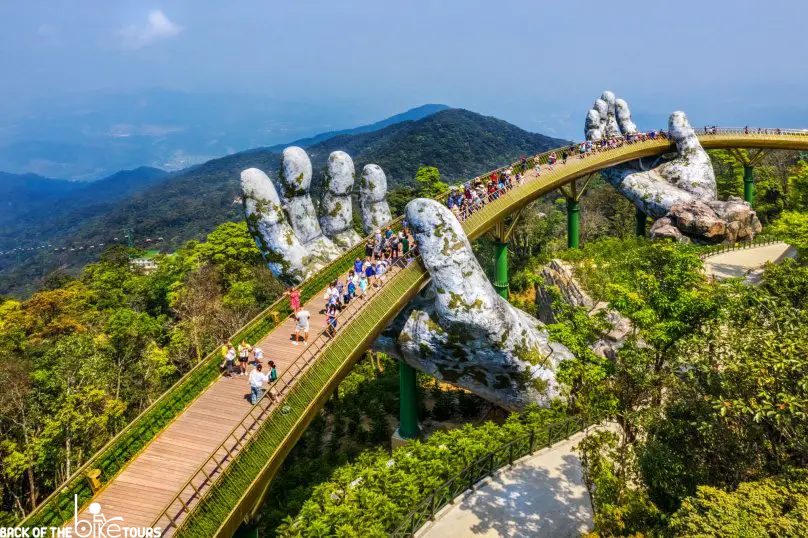
Feel the royal history in Hue Imperial Citadel: Travel back to the past on your way to Central Vietnam. Through the noble palaces and tombs in the Imperial Citadel in Hue, you find the glorious times of Vietnamese royals. The city makes time standstill with its beauty.
Hoi An
the peaceful ancient town: Under the moldy roofs of buildings that dated back centuries ago of Hoian Ancient town, you find a peaceful getaway into the past. Strolling along the stone streets in the light of colorful lanterns is the best way to find the calmness in your soul.
Catch the last breath of a faded kingdom in My Son Sanctuary: While walking through the ruined Hindu temples of My Son Sanctuary, you find the last breath of a faded kingdom that once occupied Central Vietnam. Experience the exotic architecture and mysterious atmosphere while exploring this religious complex.
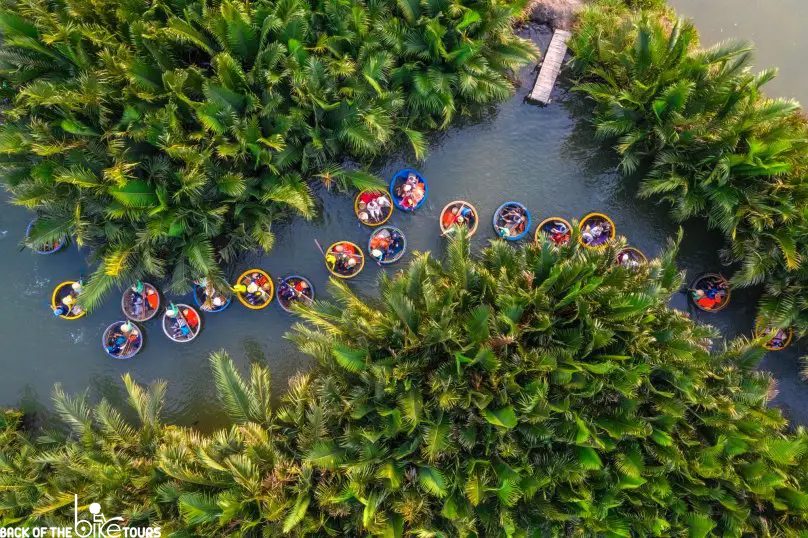
Ho Chi Minh City
Enjoy a tropical, more laid-back world on the other side of Southern Vietnam. Get to Ho Chi Minh City – the current economic hub of the nation – to feel an energetic, non-stop lifestyle with glamorous malls and countless entertainment forms.
Mekong Delta
Spend your time floating on the Mekong River and admire this biological treasure trove, while exploring the free-spirited and cheerful vibe of the Southern land. Join a floating market, ride on a horse wagon through little villages, and taste endless fresh fruits on the go!
Pamper yourself on several beaches along the coastline: After a long journey, give yourself a lazy day to lie under the warm sunlight, with white sand and blue waves pamper your feet on one of many wonderful beaches and islands across Vietnam. Cat Ba, Nha Trang, Da Nang, and Phu Quoc are all ideal destinations for a fun beach getaway.
Vietnam Travel is a Foodie Heaven for Gourmets
Vietnam has many factors, both cultural and historical, that helped create its diverse yet unique cuisine. The first is the endless ingredients provided by the tropical climate. This allows Vietnamese chefs to get as creative as they want while creating a taste only found in Vietnam with unique ingredients.
The long-term influence of neighboring cultures like Chinese, Thai and centuries of French domination introduced variable cooking methods and spices into Vietnamese cuisine. This results in a healthy balance between meat and veggies, the perfect harmony of sweet, sour and savory, and a good mixture of East meets West.
What’s more interesting here is the fact that Vietnamese people are also enthusiastic eaters: delicious food appears everywhere, from street vendors on plastic tools to fine dining restaurants. As long as you search for it, there is good food around you all the time while traveling in Vietnam.
Vietnam is an interesting place to learn: history and culture
Best places to learn about the Vietnam War
The majority of tourists come to Vietnam with some sort of impression of the Vietnam War. This 20-year war was marked as one of the most important events in our world’s modern history. Although the country has moved on and reconciled with the U.S, the government and Vietnamese people do not want to erase the past. They would rather embrace it with a proud attitude and keep the lesson for future generations.
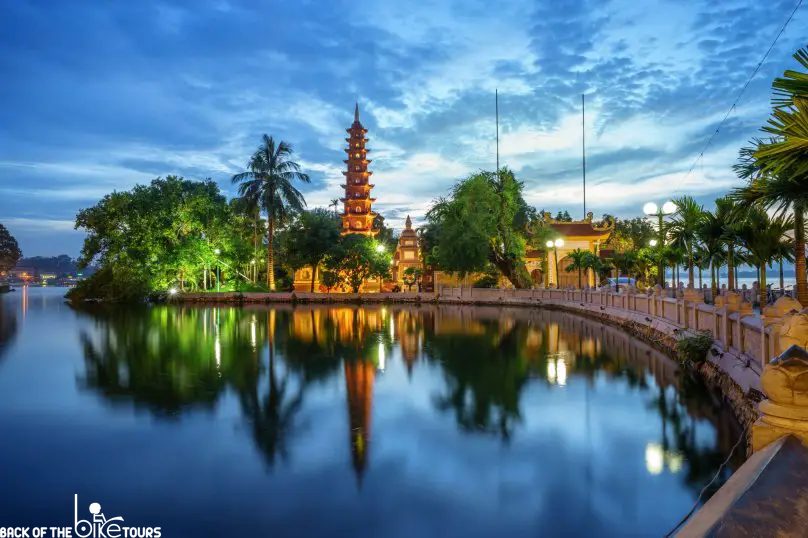
This makes Vietnam a great place to learn about the war with a positive, open-minded, and friendly attitude. Come to look at history from a different angle and leave with gratitude for our peaceful world today!
The top places to learn about the Vietnam War are Hanoi and Ho Chi Minh City – the political centers for the 2 sides of the war. When in Hanoi, take your time to visit Hoa Lo Prison – the place that captured several American prisoners of war, where they jokingly named it “Hanoi Hilton”, including John McCain. The Military Museum is a cool place to swing by if you are a fan of military gear and interesting battlefront stories.
In Ho Chi Minh City, no history geek can miss the War Remnant Museum and the Reunification Palace. One is a lively storyteller with impressive war relics, while the latter is the witness of all major events during the war, especially its ending.
Best places to explore Vietnam culture
Besides the Vietnam War, the country has more stories to tell with 1000 years of history. A highlight in Vietnamese history and culture is the interesting love-hate relationship between Vietnam and China.
Before the first Vietnamese government was formed in the 10th century, the Viet tribe went through a thousand years of Chinese dominance. Although this period resulted in a heavy influence on Chinese culture and ideology, Vietnamese ancestors managed to preserve their cultural identity. The conflicting yet harmonious fusion between ancient Vietnamese and Chinese culture manifested into a beautiful architectural style of temples and palaces, into the traditional beliefs and everyday religious practices.
The topmost beautiful and prestigious temples in Vietnam include the Temple of Literature in Hanoi, Thien Mu Pagoda – Hue, and Thien Hau Temple – in Ho Chi Minh City. The Temple of Literature in Hanoi is not only the first high-education institute of Vietnam but also a Confucian sanctuary. This temple is considered the symbol of the education spirit in Vietnamese society.
Meanwhile, Thien Mu Pagoda in Hue and Thien Hau Temple in Ho Chi Minh City are the iconic religious architecture that represents these 2 cities. Both are built to worship Goddesses in the traditional beliefs of Vietnam. While Thien Mu Pagoda is famous for its beautiful seven-story tower, Thien Hau Temple is praised for dedicated carving decorations.
Besides these temples, there are several shrines and temples in every city of Vietnam. Most of them are free of entrance and don’t take much time to explore, so why not take a look at some while you are strolling around any place?
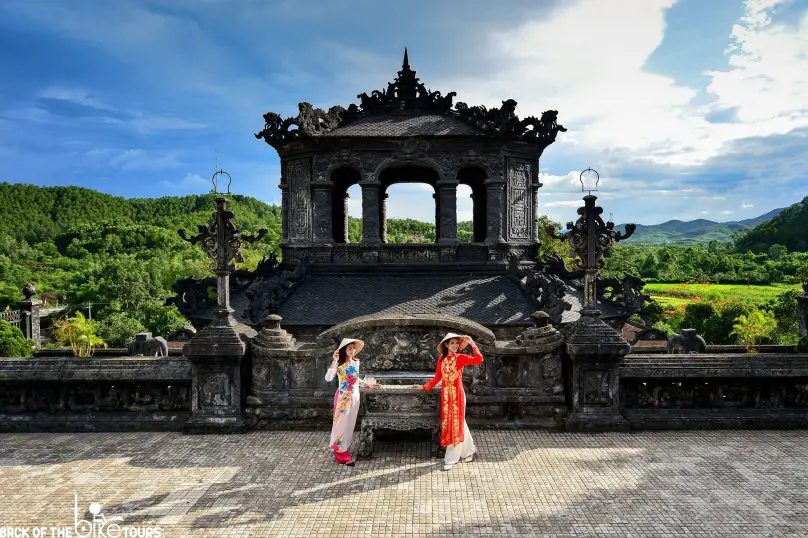
Last but not least, don’t forget to dive into the multi-culture of 54 different ethnic minorities that scatter throughout the nation, each with its own language, customs, and cultural identity. All tribes contribute to weaving a colorful picture of Vietnamese culture. Northern mountains (Sapa, Ha Giang, Lao Cai) and Central Highlands (Tay Nguyen) are the home for most ethnic minorities.
Vietnam Travel is extremely Affordable
In comparison with the nearby tourist destination Thailand, Vietnam is on the same budget, which means it’s very affordable for visitors worldwide. What makes Vietnam even more competitive is that the country joins the tourism industry years later after Thailand, the market is still growing fast which gives tourists a lot of better deals.
Even for the tightest budget, traveling throughout Vietnam won’t break your bank account. There’re many options to choose from that can minimize the expense while still giving you an overall comfortable experience.
A budget traveler can spend a minimum of $5-$8 for a single bed in a hostel dorm. Eating out won’t drain your wallet with only $1-$2 per serving for street food. Public transport only takes from $0.3 per ticket. Tickets for attractions are usually about $1-$2 per adult. There are free walking tours guided by students, and free walking streets with a lot of fun activities to join.
For a more relaxed budget, you can find a cozy, convenient hotel room in the city tourist hub that will only cost $15-$20 per night, even lower. $10-$20 per person in a local restaurant. A taxi ride from the reputable Mai Linh taxi company costs $0.7 per km, and with smart apps like Grab, the price is more competitive.
Luxury travelers who can spend $90-$130 per person a day, are already a millionaire here! Feel free to go and explore as much as you want without thinking much about the price. Top hotels offer rooms for $65 per night while 5-star restaurants in Vietnam costs $20 per person.
Of course, the price is proportional to the quality, but with most services falling into the range of 2-5 stars, you still got a good deal in Vietnam. But you can only get it if you are a careful and well-prepared traveler because Vietnam is no exception to tourist scams. In the next section, check out our top tips to beat common tourist traps in Vietnam!
How to make a smooth trip to Vietnam?
Basic things to know about Vietnam Travel
The good old advice for any traveler is: do your homework and get a clear image of the place you want to go to. The more you know about your destination, the less you feel (and look) like an alien there. Vietnam is definitely not a hidden, uncivilized place, but it does differ from the rest of the world in many aspects. So these are the basic facts to pack with you before hopping on the airplane.
Where is Vietnam located?
Vietnam is a South-East Asian country that borders China, Laos, Cambodia and the Pacific Ocean. The country stretches from North to South with over 3,000 km of coastline. It is usually divided into 3 regions: North, Central, and South with different geography and climate.
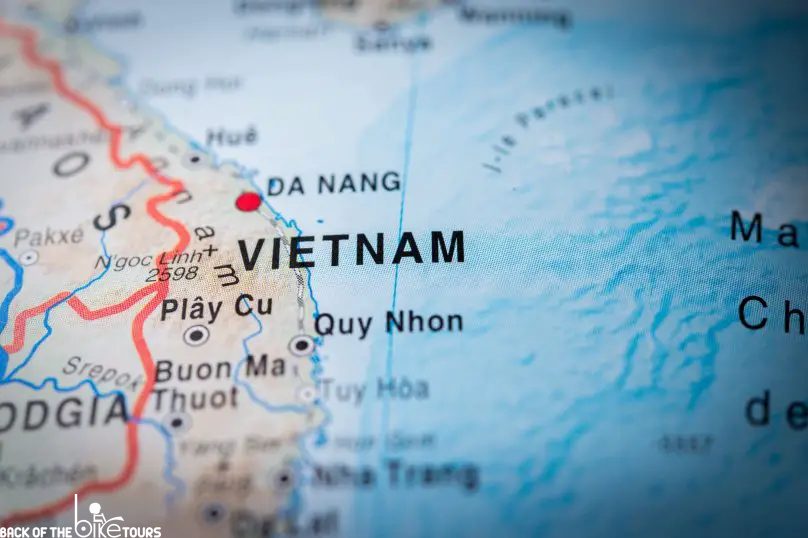
What languages are spoken in Vietnam?
Vietnamese population is growing rapidly with nearly 100 million people, over 80% of them belong to the Viet tribe and the rest belong to 53 ethnic groups in remote areas. Therefore, the common language of the country is Vietnamese.
The country once used Chinese characters for a long time, so expect to find all ancient buildings to be decorated in Chinese letters. However, not many Vietnamese people can speak Chinese. It’s also not a popular foreign language at schools and is rarely used in public.
In big cities and tourist hotspots, people can speak decent English, but most of them are young people and students, while elders don’t speak it at all. Therefore, Google Translate will be your good company most of the time.
Is Vietnam communist?
Vietnam is one of the last states that still pursue communist ideology. The Communist Party is the one and only ruling party here. Even though the country claims to be socialist, the economy is steering into capitalism with a free market and huge investments from the private sector.
One good thing to know is unlike China, Vietnam is much friendlier to the world. Internet in general and social media (Facebook, Google, etc.) are freely accessible in Vietnam.
After reconciliation with the U.S. in the 90s, Vietnamese people now treat Westerners with a warm and welcoming attitude. The topic of politics is still somewhat sensitive. But as long as you respect the country’s political regime and do not try to get involved in any form of political activity against the state, Vietnam totally welcomes you. Check out our article on Rules and Laws in Vietnam to stay away from trouble.
How developed is Vietnam?
The open economic policies help Vietnam prosper quickly in the last 40 years with a sharply increasing rate of personal income and living standards. Although the country still relies largely on agriculture, Vietnam is shifting to industrialization with promising predictions of economic growth.
Therefore, visiting Vietnam is totally not like going into the wide jungle. Common utilities, such as clean water, electricity, and the Internet, are available in most parts of Vietnam. Glamorous shopping malls, modern entertainment centers, and luxury brands are not strange to the Vietnamese people.
When you visit important metropolitans in Vietnam, you get the same feeling as in any big city around the world: organized, modern, and busy. Recently, numerous skyscrapers in big cities of Vietnam are breaking regional records, such as Landmark 81 in Ho Chi Minh City and Keangnam Tower in Hanoi.
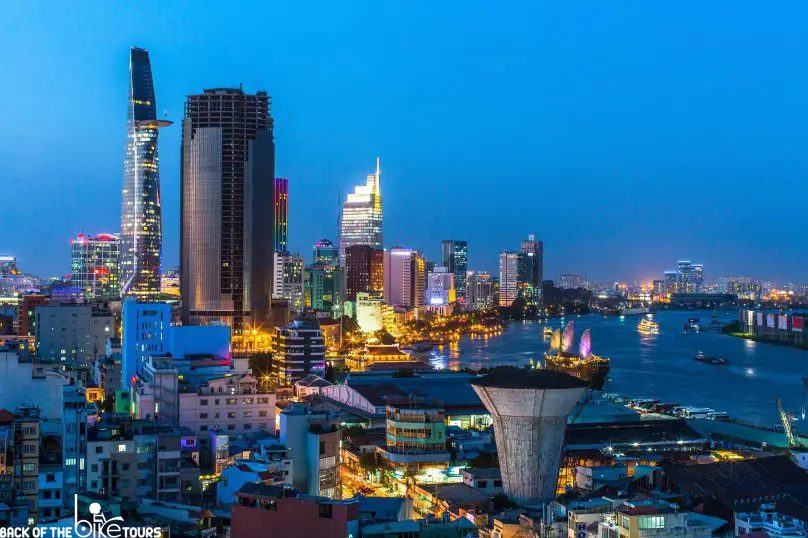
How safe is Vietnam?
One thing that the Vietnam government performs pretty well is safety control. Hanoi was even named as The City of Peace by UNESCO – an honor that no other Asia-Pacific city receives. Weapon ownership is strictly banned and violent attack is pretty rare in public.
However, pickpockets and robbers are inevitable in tourist hotspots and crowded places. Overall, tourists totally feel safe in Vietnam if they keep an eye for personal belongings and don’t go around showing off expensive items.
Vietnam Travel Tips
As the tourism industry in Vietnam is still growing, it’s certainly not flawless. Don’t get disappointed when you see some sneaky locals try to scam tourists, know that it can happen in any tourist destination. Don’t let some unpleasant moments mess up your vacation, there are more awesome things to do in Vietnam.
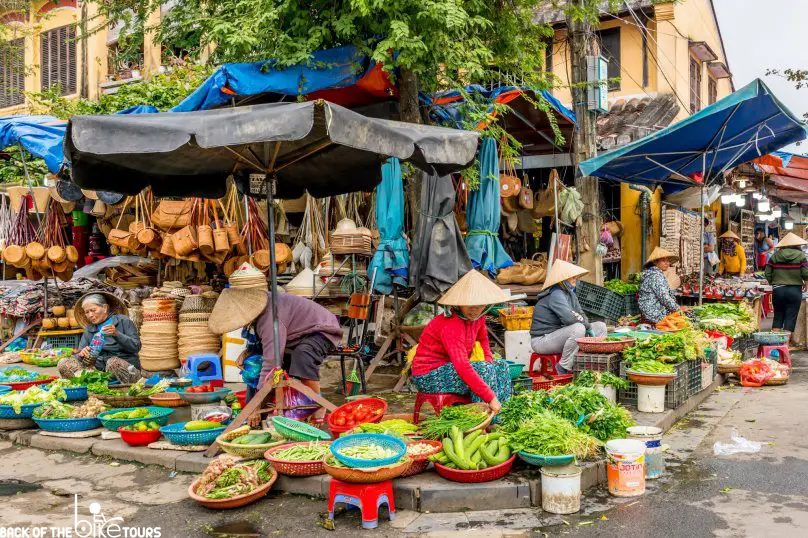
So, how to have a stress-free vacation and stay away from annoying tourist traps? Read our dedicated article of Vietnam Travel Tips for the most detailed survival guide. In brief, take note of these important things:
Prices in Vietnam are not fixed (unless it’s clearly stated): A lot of time when you do shopping in traditional markets or street vendors, the rule of thumb is not to settle down with what the sellers tell you at first. Take a look around some stores for the same goods and you’ll get an estimation of the true cost. If you don’t have the time to do market research like that, simply start your bargain with 50% of the offered price and play the haggling game.
One good thing to keep in mind: it is totally normal in Vietnam to bargain before you buy, locals do it too. Don’t take it seriously as a tourist scam, instead, take it as a chance to experience the local lifestyle with an open mind.
The dong is confusing – take care of your cash! The official currency of Vietnam is Vietnam dong (VND) with an exchange rate of ~23.000 VND per U.S dollar. So it’s not exaggerating to say that you’ll become a millionaire after converting your money here.
Too many zeros on banknotes confused a lot of tourists, leading to painful experiences such as overpaying and handling the wrong note. Take time to learn about the difference between these notes, or simply keep your wallet well-organized to avoid mistakes.
Enjoy the food but don’t forget to protect your health: the tempting street food and exotic dishes in Vietnam make people crave, but before you slurp the soup, do make a small inspection of food safety. It’s not to say that every food you see on the street is toxic, but keep in mind that food hygiene is sometimes neglected, especially in small restaurants. Always look for a clean place, with well-cooked dishes to save yourself from possible food poisoning.
Vietnam Travel Guides
Where to Go in Vietnam?
Destinations in Vietnam can be grouped into 3 distinct regions: the North, the Central, and the South. Each region has its own beauty, so we believe no single article can give you a good overview of all places in Vietnam that are worth seeing. In this article, we just hope to bring you a quick glimpse of Vietnam’s top landscapes. Let’s see which region catches your interest the most!
Hanoi
Vietnam’s history started from the North, as the Viet ancestors occupied the Red River Delta for centuries ago and built their kingdom from there. Therefore, expect to see the richness in history and culture, with a heavy influence from China and Buddhism, reflected in countless temples, pagodas, and palaces in Hanoi. A day trip to the nearby Ancient capital in Hoa Lu – Ninh Binh is also a highlight during your visit to Hanoi.
Hanoi is a great place to enjoy the vintage, faded-European vibe within the French district. Even though the city is soaring in the economy, the overall lifestyle of Hanoians is chiller and somewhat more relaxing compared to similar metropolitans around the world.
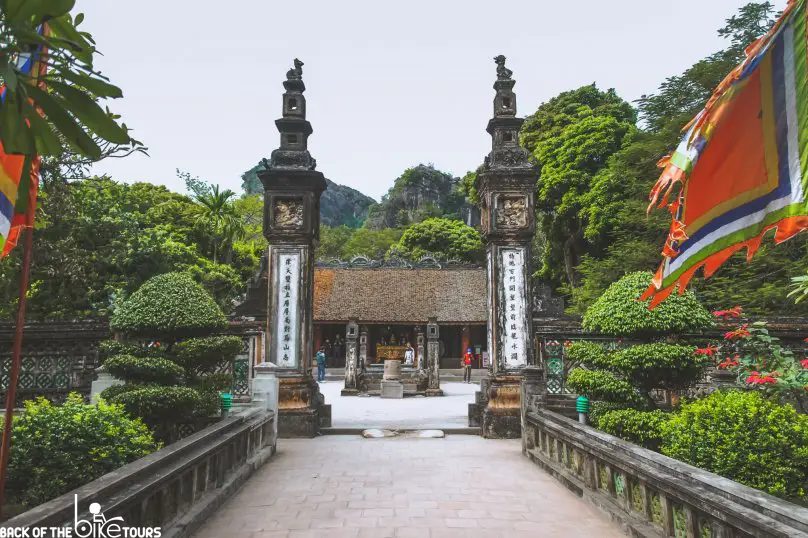
Sapa
The mountainous area in top-north Vietnam, including Ha Giang, Cao Bang, and Sapa, is the home to multiple tribes whose lifestyle remains pristine. Go there to see the beautiful golden rice terraces, undulating green hills, and little villages where indigenous tribes live in harmony with nature.
For adventurers, try to conquer “the roof of Indochina” – Mount Fansipan in Hoang Lien National Park. Another option is to explore Ha Giang in the nearby region. This place is best when it comes to riding a motorbike, especially riding through the stunning roads of Ma Pi Leng Pass. Enjoy breathtaking views of valleys, hill roads, and waterfalls in this hidden paradise.
Halong Bay
It’s hard to skip Halong Bay – the Wonder of the World and UNESCO World Heritage. Taking a cruise is recommended to have the most of Halong’s beauty and kayaking is the best way to explore the mystical limestone caves scattered throughout the bay.
Hue
Visit Hue to see the Imperial Citadel, where the last moments of royal life in Vietnam still sparkle. The city lies quietly on the bank of the beautiful Perfume River. Visit Hue to enjoy a slow, relaxed lifestyle in a vintage atmosphere with ancient palaces, countless temples, pagodas, and other old architectures.
Phong Nha – Ke Bang National Park
Phong Nha-Ke Bang National Park is definitely a gift of nature with marvelous giant caves and lush jungles with high biodiversity. Recently, Vietnam surprised the world with Son Doong – the largest natural cave and it still retains its pristine condition from million years ago. This destination is best for experienced adventurers who seek challenges.
Hoi An – Da Nang
Go further to the south to see a cluster of interesting destinations: Hoi An – Da Nang – Nha Trang. While Hoi An used to be the business hub of Vietnam in the 17th century with a well-preserved ancient town, Da Nang and Nha Trang are beautiful beach towns with the typical white sand-blue sea scenery. These destinations are great for a summer getaway, and indeed, tourists occupy all corners here every summer day.
Tay Nguyen – Da Lat
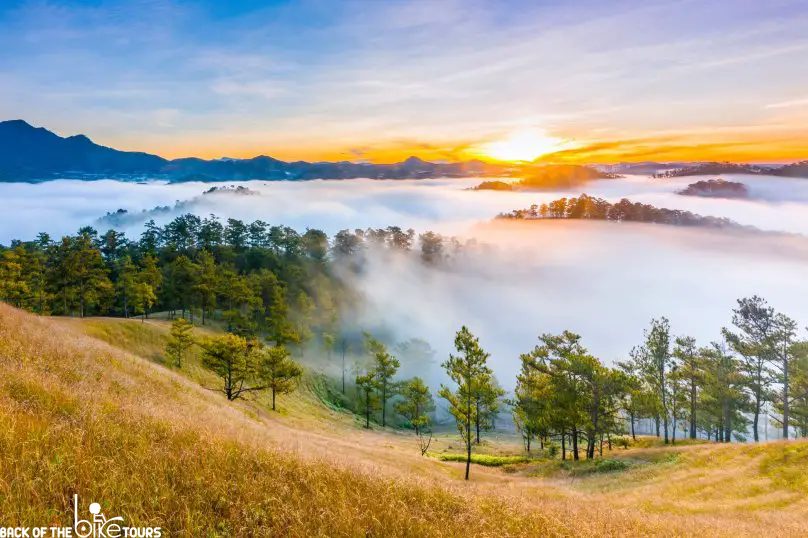
Standing between Central and Southern Vietnam is the striking highland of Tay Nguyen. This region is also home to a great number of ethnic tribes that share a common origin with Cambodians and Laos.
Explore the My Son Sanctuary – a cluster of ruined Hindu temples which retains the glorious times of the Champa Kingdom before it was defeated by the Viet. This religious complex is often compared to Angkor Wat in Cambodia and Ayutthaya in Thailand, and it’s regarded as one of the greatest Hindu temple complexes in South East Asia.
For couples, don’t forget to visit the City of Eternal Spring – Dalat. Covered in mist year-round with beautiful blooming flower valleys, Dalat is considered the most romantic city in Vietnam. This small town has been a favorite summer resort since the French colonial period.
Mekong Delta
Last but not least destination in Vietnam is the Southern land. Most tourists come to see the Mekong Delta – the precious biological treasure trove of Vietnam. For nature lovers, this is the home for more than 1.000 species of mammals, plants, fish, and lizards, while more and more species which thought be to extinct are being discovered.
Ho Chi Minh City
The South of Vietnam is also an energetic area that leads the national economy, with Ho Chi Minh City as the center of development. Come to explore a funky vibe of glamorous malls, sleepless streets, and cheerful people. In brief, the South of Vietnam is where nature and modernization exist in harmony.
Check out our guide for helpful recommendations in Ho Chi Minh City and Mekong Delta.
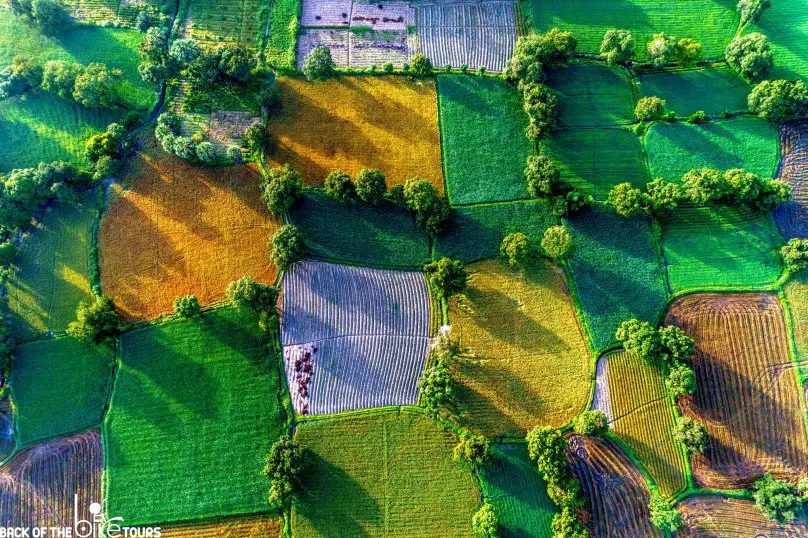
How long should I spend in Vietnam?
Minimum time to cover Vietnam
Most experienced travelers suggested a minimum time of 3 weeks to cover all 3 regions of Vietnam. With any time less than that, you won’t have enough time to enjoy the beauty of your destination to the best. Since Vietnam spans a long distance from North to South, transportation definitely takes a great amount of time, so do take it into account when planning your trip.
If you don’t have much time, consider choosing only one region in Vietnam and explore it to the most. For each destination, staying 1-2 days is adequate to grasp its vibe, but 2-3 days should be better to do more fun activities than just sightseeing.
If you still want to visit all 3 regions, traveling by domestic airline is the best option. For example, the train from Hanoi to Ho Chi Minh takes 35 hours non-stop, while the flight takes about 2 hours.
Don’t waste your time seeing similar places
Do your research carefully about what to do in each destination can greatly help to avoid similar places. In Vietnam, due to historical or cultural reasons, there are some tourist sites that you’ll likely stumble upon in every city. So what to see and whatnot, check out our suggestions below!
Ancient buildings and temples
For instance, if your trip covers both Hanoi and Hue, both of which used to be the royal capital, then feel free to skip the Imperial Palace in Hanoi because most parts were ruined while the one in Hue is preserved better. However, the Temple of Literature in Hanoi is much more prestigious with better architecture and longer history than the one in Hue.
When it comes to Old Town, Hoian is much closer to the expectation of tourists. The Old Town in Hanoi has its charm, but it has been modernized so much that it has almost nothing from the past. This place is better to find good food and souvenirs rather than sightseeing.
War relics: Hanoi or Ho Chi Minh City?
Since each city represents a side of the Vietnam War, both deserve your time. In Hanoi, don’t skip Hoa Lo Prison as these unique war relics will give you many interesting stories of many wars in Vietnam, not just the Vietnam War. Hanoi is also ideal to learn about how communism came to Vietnam and how the Vietnam War was formed. However, the Military Museum can be skipped to save time for the War Remnant Museum in Ho Chi Minh City.
Meanwhile, Ho Chi Minh City provides a deep insight into the escalating process of the war, with real battlefields such as Cu Chi tunnels and the Reunification Palace.
Beaches in Vietnam: which place is worth going to?
Vietnam has a very long coastal line of over 3,000 km, so you can expect there to be many beaches throughout the country. However, not every beach is as beautiful as your typical imagination of tropical beaches.
In general, the most beautiful beaches lie in the South and Southern Central of Vietnam. In the north, beaches are usually unsuitable for tourism because of strong waves and muddy water.
In the Southern Central, beaches in Danang, Hoian, or Nhatrang are the most famous. You can easily include them in your itinerary while visiting nearby tourist destinations since all are within a reasonable distance.
In Southern Vietnam, Mui Ne and Phu Quoc Islands are the most visited beaches. Phu Quoc Island is a wonderful beach resort where you can enjoy kayaking, jet skiing, paddle boarding, and a lot of tourist activities. Meanwhile, Mui Ne is good for sailing and can be reached easily from Ho Chi Minh City, with a less touristy vibe.
How to get to Vietnam?
Visa application for Vietnam Travel
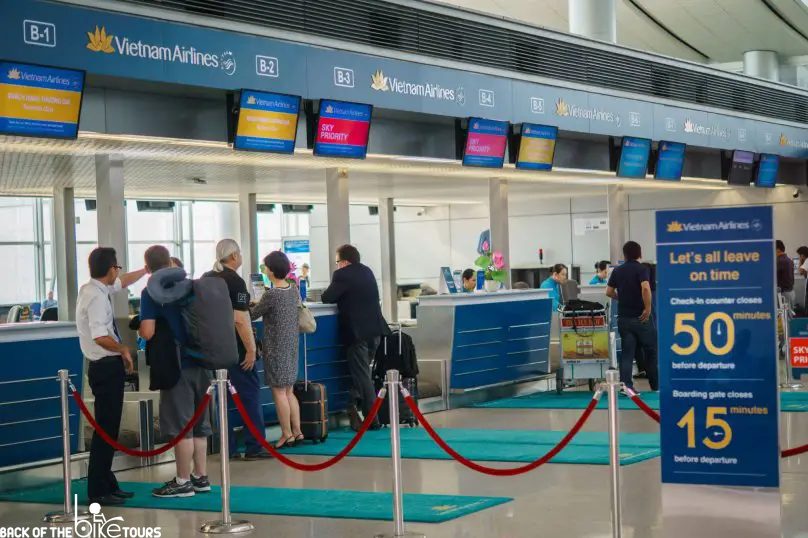
So far there are only 24 countries where citizens can enter Vietnam without a visa from 15 to 90 days, most of them are in South East Asia or Europe. So if your country is not on the list, you need to obtain the visa before you go. The documents are pretty simple, in most cases, you need a passport that is still valid in the next 6 months, an application form, and a small amount of fee, i.e. $20 for U.S residents.
Vietnam’s government is improving the visa procedure, allowing tourists to have a quicker and easier application process. You have 3 options to apply for a visa: either through a Consulate/Embassy, taking a Visa on Arrival, or utilizing the Internet for an E-visa. Each has its pros and cons, so to find what suits you the most, check out our comprehensive guide on Vietnam Visa Application.
Transportation in Vietnam
Public transport
Public transport by buses is surprisingly cheap with a single ticket costing only 7.000 VND (~$0.3). The network of public transport is pretty good in cities like Hanoi and Ho Chi Minh. Both cities are working hard to introduce the metro system to the public soon.
Taxi
The development of smart booking apps, such as Grab and GoViet, makes taxis and motorbike taxis no longer a nightmare to customers in Vietnam. If this option doesn’t work for you, we got a very helpful article on How to call a taxi in Vietnam. Follow our guide and recommendations, you will no longer fear of being ripped off by bad taxi drivers.

Motorbike rental
If you’re adventurous, motorbike rental sounds suitable for you. This also helps you to experience the vibe of Vietnam since motorbike is still the most common vehicle here. An electric scooter or a motorbike of under 50cc is the most stress-free option because they don’t require a driving license to be used. But don’t forget your helmet, or you’ll get a heavy fine from the police.
For a longer ride, you need a heavy-duty motorbike that definitely requires a license, so prepare your International Driving Permit at home. Choose a reliable rental service that includes insurance along the road.
Airplane
As mentioned earlier, the airway is the fastest option to get around Vietnam. Budget airlines like Vietjet and Jetstar offer flights from as low as $50 per round trip. They also open frequent discount programs for free tickets (not including tax and fees). So take a few months before your trip to check their websites for good deals. However, punctuality is an annoying drawback for both airlines, so don’t plan your arrival time too strict.
Rail train
The railway in Vietnam expands greatly from North to South and it goes by all famous tourist destinations. The slow speed of the train is a plus point if you love to sit back and watching the scenes on the roads. There are overnight trains with soft beds that can save you time traveling, not to mention a little bit of money on accommodation.
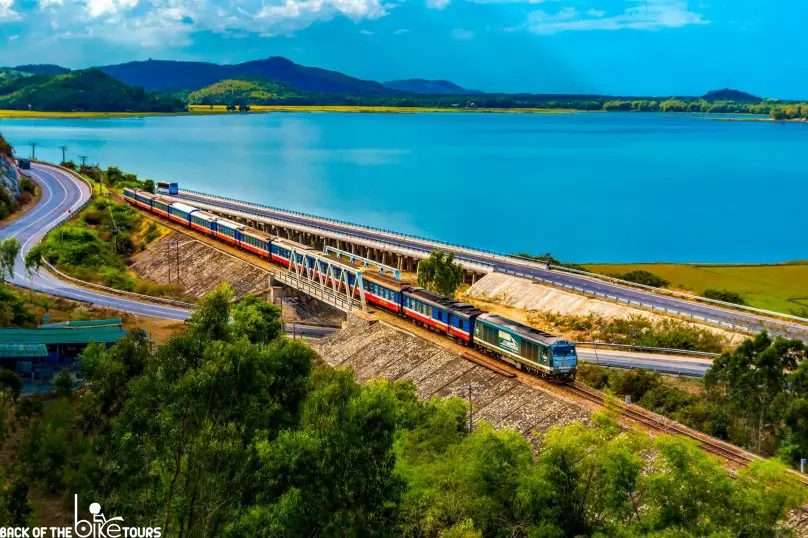
Long-ride buses
Tourist companies offer many routes for long-ride buses. This option is cheaper than the airway, and it takes less time than the train. Also, they can drive you directly to your destination or even hotels. This is pretty convenient when you visit some remote areas where public transport and taxis are not frequently available.
Best time to travel to Vietnam
With a stretchy shape, Vietnam experiences an overall mon-soon-influenced tropical climate, with great differences between regions. Choosing the right time for your vacation if very important, because bad weather can ruin your whole trip. Since the climate in Vietnam is so diverse, take a look at our detailed guide of the Best time to go to Vietnam, where we discuss the patterns for each region and give you good recommendations for the time to visit Vietnam. Here is a quick capture of choosing a good time to visit Vietnam.
Northern Vietnam: Best time to visit Hanoi
The north has temperate weather with dry, cold winter and hot, humid summer. Most tourists favor the Autumn season in Hanoi where it’s dry and sunny in most days. Autumn lasts from around September to late October. The temperature is between cool to hot, from 20°C to 30°C.
Winter comes from late November to the next year’s March, with little to no rain and cold temperatures. But the coldness in Northern Vietnam may be nothing compared to other regions in the world since the average temperature is still around 20°C, while the coldest days are from 10 to 16 °C. Therefore tourists can still enjoy Hanoi at this time of the year, although the typical grey sky does not look very good for taking pictures.
From March onward, the temperature can rise quickly to 21-28℃, with high humidity. Summer starts from June to August when it can be blistering hot at over 34°C to 40° C. In this time, Hanoi usually sees heavy rains in continuous days. This is the most inconvenient time to visit Hanoi.
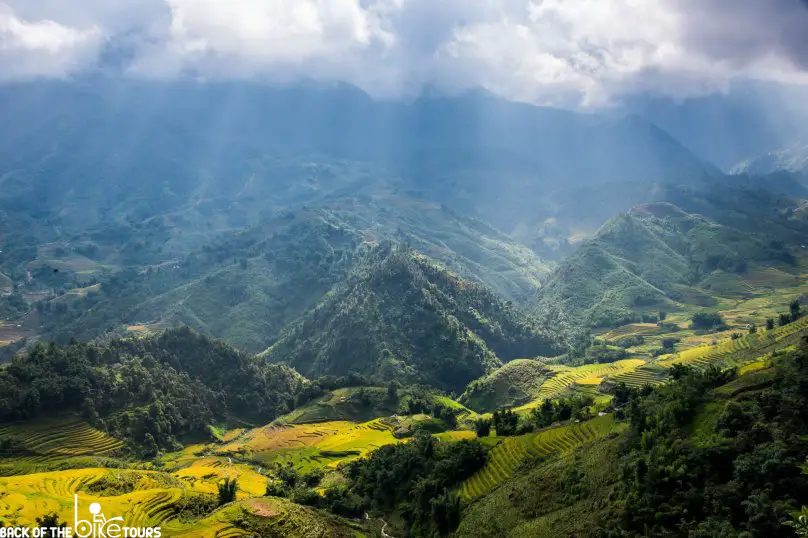
Central Vietnam: Best time to visit Hoian
The Central to the South is covered in a tropical, rainforest climate with a distinct rainy season vs dry season. The temperature is pretty stable year-round with the equivalent of early summer days in the North, around 21-28℃. February to September is a good time to visit Hoian.
During the rainy season from September to February, expect short bursts of rain to come unexpectedly during the day. In Central Vietnam, the season from October to December can be dangerous due to frequent storms. Hoi An gets heavily flooded during the storm season, causing tourists a lot of trouble. Therefore, this season is unfavorable for a trip to Hoian and Central Vietnam.
Southern Vietnam: Best time to visit Ho Chi Minh City
The weather in Ho Chi Minh City is very predictable. The temperature is stable at around 27 – 30℃. The rainy season lasts from May to October where it rains at least once a day in short bursts. In this season there are periods of heatwaves that make the temperature raise up to 40° C.
From November to April, it will be drier which makes this time ideal to visit Ho Chi Minh City.
Vietnamese Street food: Taste the whole nation on the streets
Must-try national dishes: Pho and Banh Mi
Vietnamese cuisine is now familiar to foodies around the world. Iconic dishes in Vietnam such as Pho (beef noodles) and Banh Mi (Vietnamese baguette) are featured in every travel magazine and travel vlogs. These tasty dishes guarantee to convert the most demanding connoisseur into a fan of Vietnamese cuisine. Once you visit the country, you’ll encounter these dishes everywhere. Many tourists eat them throughout their trip but never get sick of it, because each region adds its own flavor into the cooking method and special ingredients.
For example, Pho in Hanoi is more savory, with a clearer broth while pho in Ho Chi Minh has a thicker flavor with a variety of seasonings and a fatty taste. In Hanoi, definitely check out Pho Thin (61 Dinh Tien Hoang), Pho Bat Dan (49 Bat Dan), and Pho Ly Quoc Su (10 Ly Quoc Su) to check out the top representatives of Pho Hanoi. In Ho Chi Minh City, we recommend Pho Le (413-415 Nguyen Trai) as the tastiest pho!
For Banh Mi, even though it’s just a baguette filled with meats and veggies, local chefs created endless recipes. When you come to Hoi An, definitely look for the unique Banh Mi Phuong with the secret sauce that nowhere else has. In Ho Chi Minh City, don’t skip the famous Banh My Huynh Hoa. You’ll likely have to queue for a long time, but once you taste their special homemade pate, you know that it’s all worth it!
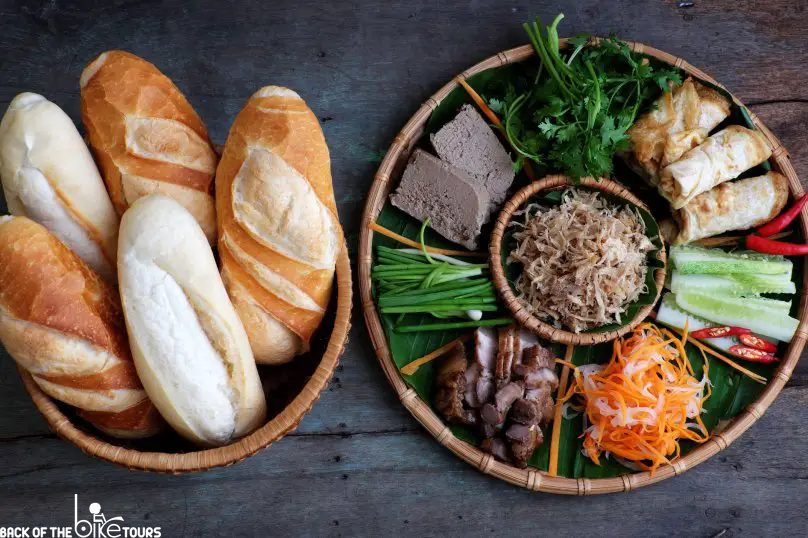
Hanoi’s specialty: Bun Cha
Other dishes that represent their local origins excellently include Bun Cha in Hanoi, Cao Lau in Hoi An, and Com Tam in Ho Chi Minh City. Bun Cha is a combination of dry rice noodles (bun) and grilled pork (cha), eaten along with a bowl of well-seasoned fish sauce and plenty of herbs.
The smell is enough to make your mouth watered and the taste is pretty addictive. Hanoi is the birthplace of this dish with numerous authentic restaurants with a long history, so try to devour it as much as you can while you’re here.
Famous places to try Bun Cha Ha Noi are Bun Cha Huong Lien (24 Le Van Huu) and Bun Cha 34 Hang Than.
Hoian’s specialty: Cao Lau
Cao Lau is the specialty of Hoi An and you can’t find the same quality anywhere. The dish composes of rice noodles – which is processed differently than the common white rice noodle to give it a distinct taste, char-siu pork – influenced from Chinese/Japanese cuisine and veggies. When being served, all ingredients are mixed together, with a splash of light broth. This dish was once the luxury treat only for the richest in the old time.
Having a bowl of Cao Lau in the ancient town of Hoian is a must to complete your trip here. Check out Cao Lau Lien (34 Thai Phien) and Cao Lau Trung Bac (87 Tran Phu) to try the most famous Cao Lau in Hoian in ancient settings.
Ho Chi Minh City’s specialty: Com Tam
If you leave Ho Chi Minh City without trying Com Tam at least once, your trip is not complete. It’s said that people in Ho Chi Minh City love Com Tam as much as Hanoians crave Pho. That’s enough to see how Com Tam is a representative of Southern cuisine.
This dish used to be the specialty of the poor, with the main ingredient being broken rice – a side product in the production of rice. However, in combination with the well-seasoned grilled pork rib, crunchy pork skin, sunny-sided egg, and pickles, Com Tam won the heart of every foodie regardless of social status and became a symbol for Ho Chi Minh City cuisine.
When you are in Ho Chi Minh City, try Com Tam Ba Ghien (84 Dang Van Ngu) – one of the most famous restaurants for this dish here.
The dishes mentioned above are just a tiny fraction of thousands of tasty food in Vietnam. We provide many tour options to help you explore the best of Vietnamese cuisine! We hope you can try all of them by yourself and create enjoyable moments while traveling in this beautiful country.
